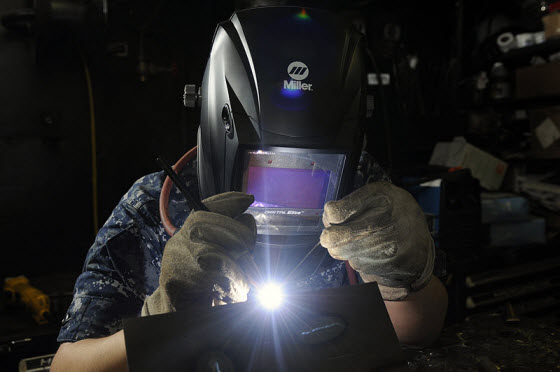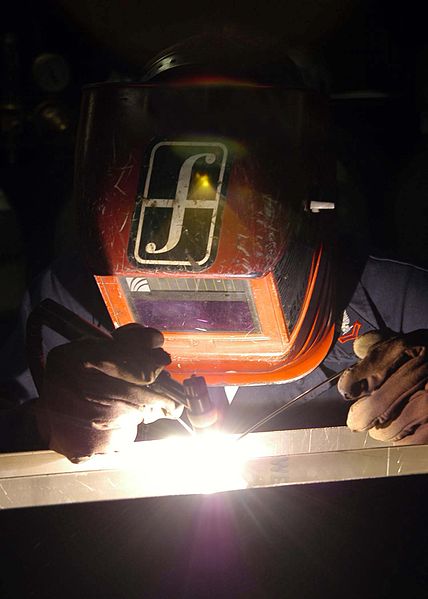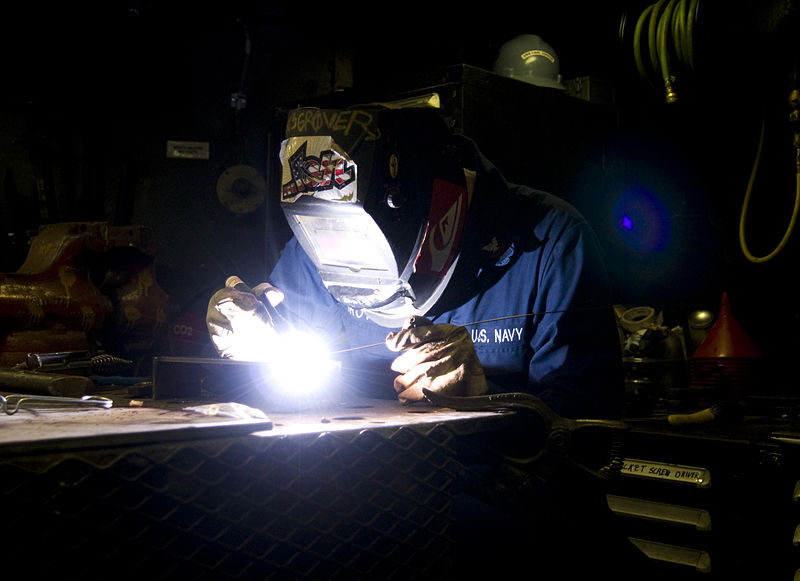Common Metals You Can TIG Weld!
TIG welding is also known as Gas Tungsten Arc Welding (GTAW), and it is often the best process for welding thinner metals such as steel and aluminum.
The reason that many welders prefer this process is because they have better control of the weld. The end result is usually a better weld compared to MIG or Stick welding.
I am not going to discuss the different ways to weld each type of metal, but I will go over the basic metals you can tig weld, along with a few of the different characteristics of each type of metal.
Can You Tig Weld Aluminum?
The TIG welding process is used more than any other welding process including MIG, Stick, and Oxy Acetylene to weld aluminum for the reasons we just discussed; you have good control of the weld and you can get excellent results.
And you will find that aluminum is easy to TIG weld compared to the other processes (after you get comfortable with it of course, because it it isn't easy to learn).
Aluminum comes in different series which are identified by numbers. The series 5XXX, 3XXX, and 1XXX do not require heat treatment.
Aluminum that you can treat with heat are series 2XXX, 6XXX, and 7XXX. These series of aluminum will require hotter welding and a faster travel speed.
Although you can weld aluminum in all welding positions your best results will come from the flat position.
You'll weld in AC because it has a cleaning action that removes the thin layer of oxide from aluminum that forms. You'll also use Argon which has good cleaning action. And the blunt tipped electrode is what you will need for welding in the AC.
TIG Welding Stainless?
Welding stainless steel is basically the same as welding aluminum except that you are going to be welding in a different current and you'll use a different electrode as well.
You'll want to use Direct Current Straight Polarity (DCSP). You can also use Alternating Current High Frequency (ACHF) if you weld with the forehand (or push welding) technique.
You'll be welding stainless steel at a higher amperage compared to aluminum so check your welding machines recommended settings.
Can You TIG Weld Copper?
If copper is cleaned well prior to welding you'll find that it is quite easy to tig weld.
100% copper is easy to weld but if there are other alloys in the copper material you'll find that things change. If there is silicon or nickel in it there won't be a problem, but if there is zinc or tin or lead in the copper you'll have problems. You may not be able to weld it at all.
Copper preparation that is .25" or less does not require a bevelled edge (you may disagree). I don't weld copper often so if you have another opinion let me know.
The push welding (forehand) technique in Direct Current Straight Polarity (DCSP) is a good choice for welding copper that is .050" or more. If you weld anything thinner then consider switching to Alternating Current High Frequency (ACHF).
Can You TIG Weld Cast Iron?
Depending on the type of cast iron you want to weld, it can be done.
There are 3 type of cast iron you can tig weld successfully: Gray, White, and Malleable.
Preheating is required. If you are welding the Gray type then it is recommended that you preheat anywhere from 500 - 1250 degrees Fahrenheit. The reason there is a large range is because the shape of your piece and the size are important factors.
To keep your cast iron from cracking or creating stresses that are hard to see, you need the metal need to be cooled down after you weld it. A technique that some metal workers use is cooling it down by putting ashes on it.
Can You TIG Weld Magnesium?
Magnesium has similarities to aluminum. They both heat up very fast and also melt easily. And they both have oxidation issues.
Direct Current Reverse Polarity (DCRP) and Alternating Current (AC) have good oxidation cleaning ability.
If you use Helium in Direct Current Reverse Polarity you'll get a wider weld bead, good heat, and the penetration will not be very deep.
If you weld in the Alternating Current High Frequency you can weld material anywhere from .20" - .25" are a little higher. In ACHF you can use Helium or Argon or mix them.
And if you weld in Direct Current Straight Polarity and you are using Helium you'll won't get the cleaning action you need but it will penetrate deeply.
You'll find welding magnesium is best when you are as close ot the vertical welding position as you can get, and using the forehand or push welding technique.
Copyright WcWelding.com All Rights Reserved.
Welding Plans:
New! Welding Table
New! Log Splitter
Top Projects:









